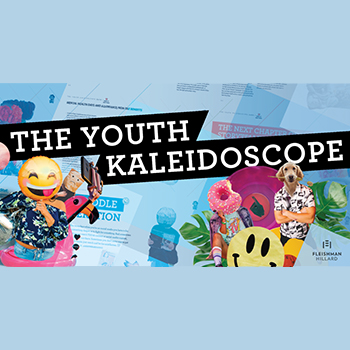But First, Listen: Three Ways Femtech Brands Can Reach Women and Drive Change Through Communications
The women’s health and ‘femtech’ industry is exploding. And rightfully so — women’s health, which encompasses much more than reproductive issues (menstruation, fertility, menopause), has historically been overlooked, underfunded and highly stigmatized despite women comprising more than half of the population and making 80% of consumer healthcare decisions.
While strides are being made within the healthcare and venture capital community to pay increased attention to this underserved sector, more work remains. As recently as 2019, women accounted for only 40% of participants in clinical trials for three of the diseases that most affect women — cancer, cardiovascular disease and psychiatric disorders — despite representing 51% of the U.S. population, according to a 2022 study. And representation in studies is even worse for women of color. President Biden recently called on the U.S. Congress to make a bold, transformative investment of $12 billion in new funding for women’s health research to address this disparity.
But changing systems and structures will take time. We can start with communications and transforming how we talk about women’s health now. This becomes even more important when we remember that women’s health advertising is still being censored – most recently, a breastfeeding start-up’s advertisements were removed from Times Square in New York City.
While brands continue efforts to push the boundaries, more can be done to drive conversation amongst specific audiences and communities and continue to raise awareness and truly address women’s health needs.
We should take the time to understand women’s experiences and avoid making assumptions about what they want and what solutions will work, and treating them as monolithic—or simply not considering them at all. Our language also needs to become more human. Medical jargon and an overemphasis on ‘patients’ exclude the people we aim to serve: the women worldwide who may feel misunderstood, unseen or unempowered.
Take menopause, for example. Despite being a medical issue most women will experience in their lifetime, research and understanding are limited. Stereotyped as hot flashes and irritability amongst women in their 50s, menopause can affect women as young as 30 years old, with wide-ranging symptoms from memory loss and increased risk of anxiety and depression. Not only that, but Black and Latinx women tend to enter menopause earlier and have longer-lasting, more intense symptoms. So, how can we develop solutions that will make a meaningful difference?
To drive real change, we need to dig into the nuances of the conditions women face and how they affect different communities and demographics. We also need to look at what other aspects of their lives may be affecting their health outcomes. For example, women in low-income communities are at a greater risk of being uninsured, which leads to less preventive care, such as Pap smears and mammograms. Uncovering authentic and powerful insights is the key to creating communications with impact.
By better understanding women, we can create conversations within culture that reach the right people in the right places. If you are a healthcare brand or a brand targeting women about health issues, consider these guiding principles as you plan your next campaign:
- Set clear objectives and identify the right solution: A clear understanding of your audiences, their experiences and how they are impacted by various issues will help you determine what success looks like and differentiate the core products and services that can best respond to those pain points.
- Craft the right communications strategy: Strong insights about the audience and the landscape they operate within will allow you to craft emotional and impactful messaging that will resonate with the target audience and their lived experiences.
- Execute with impact: Use data to inform the channels and communities you need to reach your consumers. Your strategy and insights should inform precisely how you will execute to achieve your objectives. Reaching the right people in the right places is critical to encouraging engagement — whether through events, podcasts, online communities or traditional media, you will want to be sure you can track what is resonating and what works.
Femtech is poised to drive change and start to balance the scales in women’s health. To have the best chance of success, we need to start with listening to women.
Find Out More
-
Sustainability Newsletter
October 7, 2024
-
Awards for Excellence in Public Relations 2024
July 23, 2024


